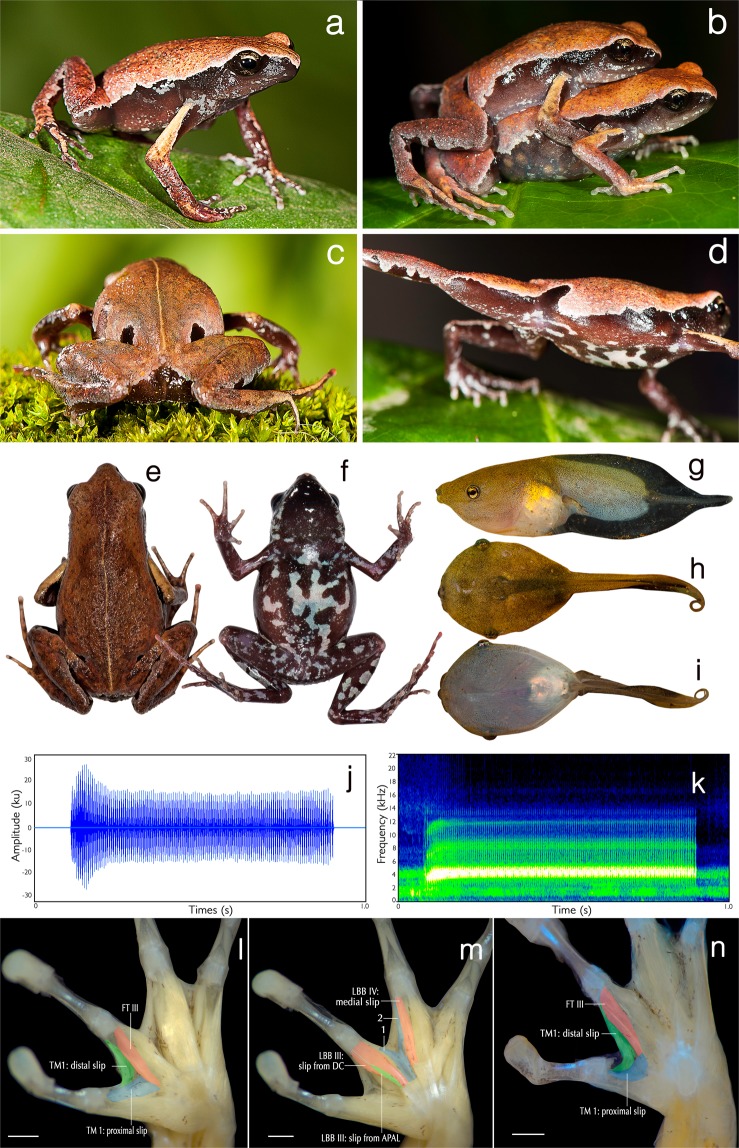Figure 1.
Diagnostic characteristics of Mysticellus franki gen. et sp. nov. (a–f) Adult in life. (a) Holotype (ZSI/WGRC/V/A/966, male) in dorsolateral view; (b) holotype (male) and paratype (ZSI/WGRC/V/A/971, female) in amplexus; (c) two ‘false-eye’ like spots on the back; (d) lateral markings; (e) dorsal view; (f) ventral view. (g–i) Tadpole in life. (g) Lateral view; (h) dorsal view; (i) ventral view. (j–k) Male advertisement call. (j) One second call segment showing pulsatile temporal structure; (k) spectrogram of one second call segment. (l–n) Hand musculature. (l–m) Palmar view of Mysticellus franki gen. et sp. nov. (SDBDU 2015.2870, left hand). (l) Flexor teres digiti III (FT III) passing ventrally to both slips of m. transversus metacarpus 1 (TM 1); (m) two previously unreported accessory flexor muscles on digiti III and IV (labeled as “1” and “2” respectively); (n) palmar view of Micryletta inornata (KU 328192, left hand) showing FT III dorsal to the proximal slip of TM 1 and ventral to the distal slip. Abbreviations: TM I: m. transversus metacarpus I, FT III: m. flexor teres digiti III, LBB III–IV: m. lumbricalis brevis digiti III–IV. Scale bars = 0.5 mm.

